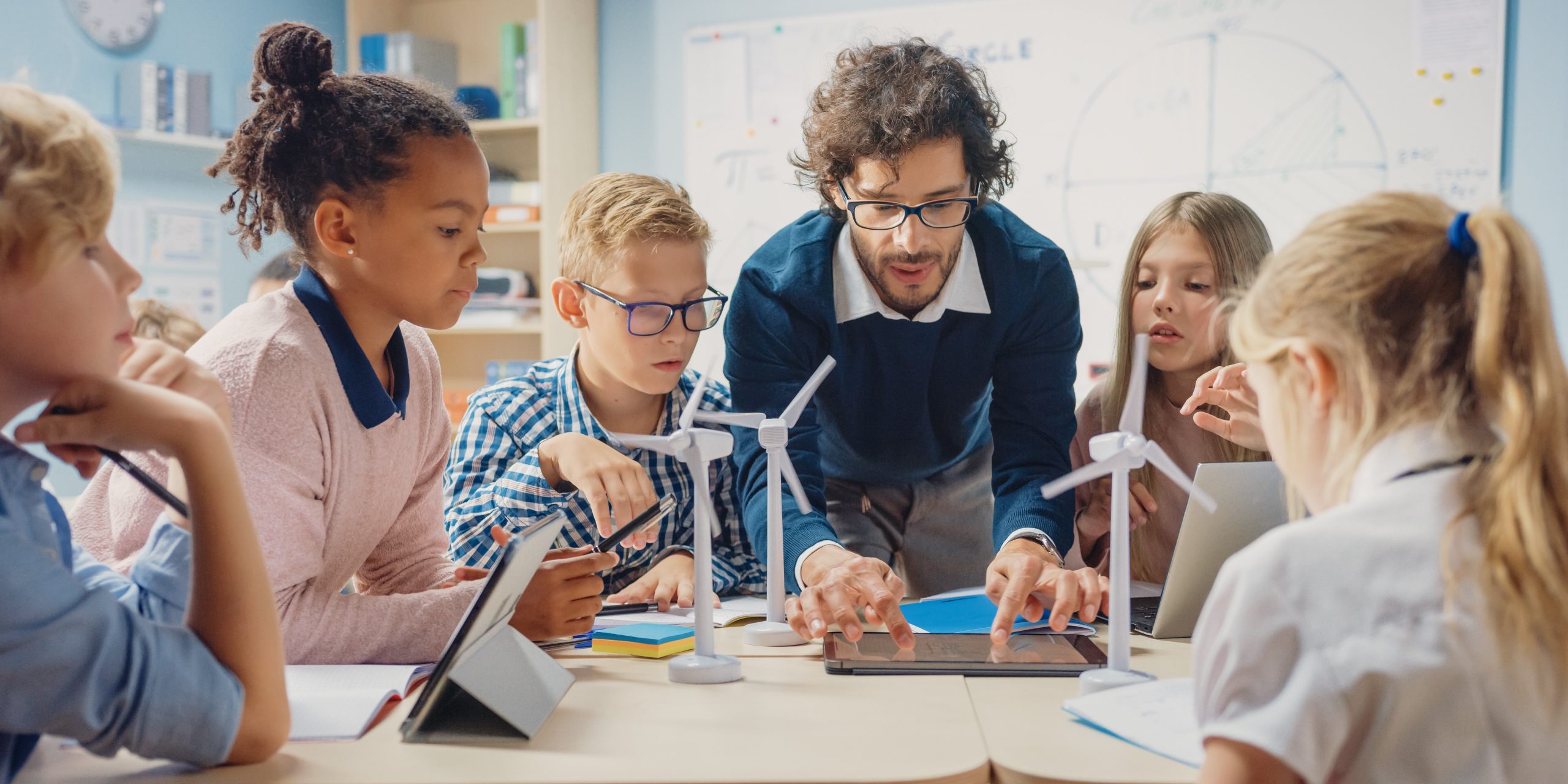Personalized Primary Science Tuition Singapore to Cater to Your Child’s Needs
Personalized Primary Science Tuition Singapore to Cater to Your Child’s Needs
Blog Article
A Comprehensive Guide to the Various Discovering Approaches in Primary Science Direction
The exploration of varied understanding techniques in primary scientific research direction presents a possibility for teachers to enhance trainee involvement and comprehension considerably. By checking out hands-on understanding methods, inquiry-based methods, and collaborative methods, we can determine reliable techniques that provide to numerous learning designs.

Hands-On Discovering Methods
Hands-on understanding methods play a critical duty in key scientific research guideline, engaging trainees in energetic expedition and testing. These methods permit learners to connect directly with materials and phenomena, fostering a much deeper understanding of scientific principles. By utilizing manipulatives, versions, and real-life experiments, teachers develop an environment where trainees can observe, assume, and check their concepts.
Such strategies not just boost comprehension yet also grow essential thinking and problem-solving skills. When trainees take part in tasks like constructing simple machines, growing seeds, or conducting chain reactions, they are encouraged to ask questions and seek solutions via their very own observations. This experiential technique assists to demystify intricate scientific principles, making them more relatable and obtainable.
Furthermore, hands-on discovering promotes collaboration amongst peers, as trainees commonly operate in teams to carry out experiments or share searchings for. This synergy not only enhances their learning experience yet additionally establishes essential social skills. Eventually, incorporating hands-on techniques in primary scientific research guideline fosters a long-lasting love of understanding and curiosity concerning the environment, laying a strong structure for future academic quests in science and beyond.
Inquiry-Based Discovering
Inquiry-based knowing is an instructional method that urges trainees to ask inquiries, examine phenomena, and create their own understanding of scientific concepts. This approach shifts the focus from typical teacher-led direction to a much more student-centered experience, where learners take the campaign in their instructional journey. By cultivating inquisitiveness, inquiry-based understanding promotes much deeper involvement with the material, allowing students to check out topics in a significant context.
In practice, this strategy commonly includes hands-on experiments, observations, and important reasoning tasks that line up closely with the clinical approach. Trainees are encouraged to formulate hypotheses, layout investigations, and evaluate data, which cultivates important abilities such as problem-solving and analytical thinking. The duty of the educator in this framework is to assist in exploration, leading trainees through the questions process while urging independent thought and partnership.
Moreover, inquiry-based knowing nurtures a sense of possession over the discovering process, inspiring students to go after expertise proactively. This approach not just improves understanding of scientific ideas however likewise fosters a lifelong love for knowing, gearing up trainees with the skills required to navigate an increasingly complicated globe.
Collaborative Knowing Approaches
Collaborative understanding techniques equip students to participate in purposeful communications with peers, cultivating a shared duty for their instructional end results. In main scientific research guideline, these approaches motivate students to collaborate to explore scientific ideas, resolve issues, and perform experiments (primary science tuition Singapore). By participating in group tasks, pupils can take advantage of varied perspectives, enabling richer understanding and retention of scientific knowledge
One trick aspect of collaborative knowing is the focus on communication skills. Pupils need to verbalize their thoughts, listen actively to others, and discuss ideas, every one of which are essential proficiencies in both real-world and scholastic contexts. This social communication not just boosts their understanding of scientific principles however additionally promotes team effort and dispute resolution skills.
Moreover, collaborative knowing typically leads to boosted inspiration and engagement. They are more likely to take possession of their understanding trip when trainees see the worth of their contributions within a group. Teachers can promote this process deliberately structured group jobs that line up with educational program goals while offering advice on efficient cooperation techniques. Overall, including joint discovering methods in main science instruction cultivates a vibrant understanding setting that prepares students for future scholastic and social challenges.
Innovation Integration in Science
The combination of modern technology in main science direction enhances discovering experiences by offering ingenious tools and sources that sustain different mentor approaches, including joint understanding - primary science tuition Singapore. The usage of find more information digital systems, simulations, and interactive applications enables pupils to involve deeply with scientific principles, helping with a more hands-on technique to knowing
Virtual laboratories, for example, important link enable students to perform experiments securely and efficiently, advertising inquiry-based knowing. These devices can simulate real-world scientific situations, permitting trainees to imagine intricate procedures that would certainly be challenging to reproduce in a standard classroom setting. Technology promotes interaction and cooperation among students, as they can share searchings for and function with each other on jobs with on the internet systems.
Furthermore, multimedia presentations and academic video clips can enhance lessons by providing to diverse understanding designs, making abstract ideas a lot more obtainable. Data evaluation tools likewise encourage trainees to accumulate and translate clinical information, strengthening vital assuming skills. Generally, the critical unification of technology in primary scientific research guideline not just improves engagement yet likewise prepares students for a technologically sophisticated culture, outfitting them with necessary abilities for future scientific undertakings.
Distinguished Instruction Strategies
Differentiated instruction techniques are important for dealing with the diverse requirements of students in main science education. These approaches enable teachers to tailor their mentor techniques to fit varying capacities, interests, and finding out styles within the classroom. By utilizing separated guideline, educators can create an inclusive environment that promotes engagement and enhances understanding of clinical ideas.
One effective method is to utilize versatile organizing, which permits trainees to work together with peers at similar ability degrees or with differing perspectives. This technique encourages peer knowing and advertises crucial reasoning. In addition, supplying options in projects can encourage trainees, permitting them to select projects that reverberate with their rate of interests while still meeting curricular objectives.
Additionally, including tiered projects is an additional valuable strategy. By making jobs with differing levels of complexity, instructors can guarantee that all pupils are properly tested, despite their proficiency. Using formative assessments to assess recognizing more enables instructors to readjust their training sites approaches dynamically, making sure that each learner gets the assistance they need.
Inevitably, carrying out distinguished instruction strategies in main scientific research education and learning not only enhances student knowing end results but also grows an interest for scientific research, preparing pupils for future academic quests.

Final Thought
In recap, reliable primary science direction necessitates a multifaceted technique that encompasses hands-on discovering, inquiry-based approaches, and collaborative methods. The assimilation of innovation and set apart instruction better satisfies varied discovering designs, promoting an environment conducive to expedition and essential reasoning. By applying these strategies, educators can boost pupil involvement and understanding, eventually nurturing a long-lasting enthusiasm for science and questions. Such thorough techniques are important for developing educated and curious future researchers.
The expedition of varied learning methods in key science instruction presents a chance for teachers to boost student engagement and comprehension substantially.Hands-on understanding techniques play a critical role in main science guideline, engaging trainees in active expedition and testing.Inquiry-based understanding is an instructional strategy that encourages students to ask questions, check out sensations, and construct their very own understanding of clinical ideas.Collective understanding methods empower pupils to involve in significant interactions with peers, promoting a shared duty for their instructional end results. Overall, incorporating collaborative discovering strategies in primary scientific research direction cultivates a vibrant discovering atmosphere that prepares pupils for future academic and social challenges.
Report this page